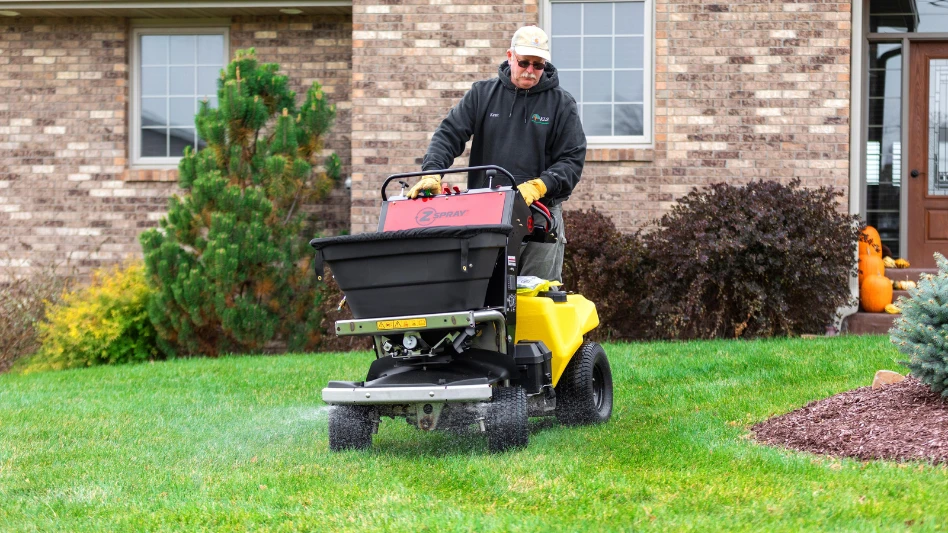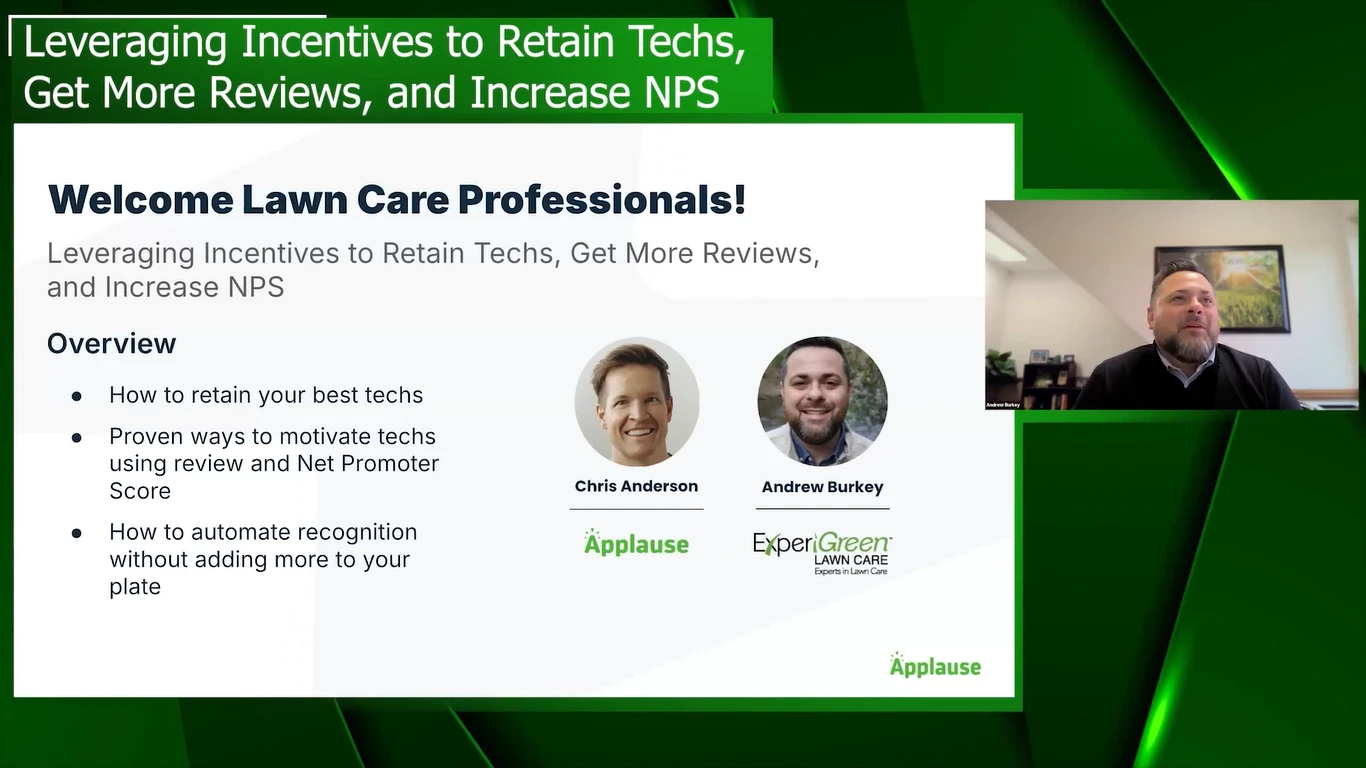Making You Pay
As labor becomes harder and harder to find, the price contractors have to pay for it will only go up and up.
A survey conducted via Lawn & Landscape Online found that better than 56 percent of the respondents are paying their entry-level employees between $7 and $8.99 an hour. Slightly more than 30 percent are paying from $5 to $6.99 an hour with about 13 percent paying more than $9 an hour.
These results indicate an increase in wages for entry-level personnel when compared to results from a 1995 Lawn & Land-scape survey that found contractors paying these employees an average of $6.59 an hour.
An Online Advantage
ORLANDO, Fla. – Imagine if your customers could get a lawn care estimate then schedule and order their service without ever having to call the your office. One company is making this a reality through its website.
“If a customer gets online at midnight and wants service the next morning, we will be there,” explained Joe Rand, marketing director, Middle-ton Pest Control.
According to Rand, the site is advantageous to a two-income family because they don’t always have time to do their yard work and they don’t need to take time out of their schedule to be at home for an estimate.
The site’s estimating and scheduling service has only a few steps to follow as it prompts the user through a series of questions and finishes by giving an estimate. The user can then quickly schedule their own appointment.
“The e-commerce section of our website was designed to be fast and easy to use,” remarked Greg Clendenin, president and CEO of Middleton. “With some basic information about the consumer’s home, we can provide an online pest control or lawn care estimate that matches what one of our technicians would provide in a face-to-face meeting. We developed a list of information that was needed in order to provide high quality service without making the process too long and cumbersome for the consumer.”
To handle short-notice appointments, Middleton established a front-line team.
“We changed the structure and built flexibility into the organization,” stated Rand. “We have 11 branches and each one has a response team for Internet sales.”
According to Rand, the same pricing structure for face-to-face visits is in effect for the Internet sales.
“There is no premium charge,” Rand stressed. “There is even a 5 percent discount for ordering online.”
Middleton enjoys benefits from this service as well. Rand explained that it makes the organization more productive because they are not making trips out to properties simply to give estimates.
“We know that the Internet is shaping purchase decisions,” Rand pointed out. “We don’t expect an immediate response, but within the next five years the consumer may make all of his or her purchases online."
Study Shows Pest Control Trends
PARSIPPANY, N.J. – A survey conducted by The Olson Research Group, on behalf of RohMid, showed a shift by turf professionals toward using grub and lepidopteran control products that are applied prior to egg lay or within the first few weeks after egg lay.
This survey of 312 lawn care operators throughout the country found that 10 percent more of these turf professionals intend to use a preventive grub and lepidopteran control product in 1999 than in 1998.
According to Dave Shetlar, Ph.D., extension landscape entomologist at The Ohio State University, the preventive products’ effectiveness, convenience and environmental profiles are key factors driving this trend.
CLCA Releases Wage Report
SACRAMENTO, Calif. – The effects of the economic recession that hit the West Coast so hard in the early 1990s are still evident today. The California Landscape Contractor Association’s 1999 Wage and Benefit Survey recorded California contractors’ average gross annual sales at $898,338 in 1998, compared to $1,097,427 in 1991. Contractors learned some valuable lessons during the recession, however, as they have boosted sales per employee a staggering 68 percent in the last seven years – from $30,827 in 1991 to $51,661 in 1998.
The survey also found that landscape maintenance firms have higher average annual gross sales than landscape construction firms do ($791,865 to $678,762) and maintenance firms employ more than twice as many people (25.8 to 11.2).
The average construction laborer with no experience is being paid $6.71 an hour, compared to a new maintenance employee at $6.44 an hour. Hourly wages climb from this point, however, going as high as $18.72 per hour for a Certified Landscape Technician in construction and $15.61 for a CLT in maintenance.
Program Takes Environmental Report
EVERETT, Wash. – In an effort to increase the number of environmentally friendly landscaping companies in the Puget Sound region, The Washington Association of Landscape Professionals, King County and the City of Seattle are developing the first-ever environmental landscape certification test.
According to Peter Dervin, executive director of WALP, the industry needs to be more pro-active in addressing consumer concerns.
Over time, the program is expected to help conserve water and reduce water pollution and disposal of grass clippings.
According to Dervin, the test will cover topics such as how turf practices can affect the environment including site assessment, mowing, irrigation, fertilization, weed and pest control and renovating or replacing lawns.
“For example,” Dervin pointed out, “site assessment will look at issues regarding drainage and slope.”
Dervin added that feedback to the program has been positive because the industry wants to be viewed as pro-active.
IA Wins Battle In Illinois
FAIRFAX, Va. – The Irrigation Association reported passage of Senate Bill 457 by the Illinois House and Senate to amend the controversial Illinois Plumbing License Act. This amendment overturns previous legislation that prohibited irrigation contractors from installing residential and commercial irrigation systems in the state of Illinois.
The state law required that irrigation systems be installed by licensed plumbers, thereby restricting contractors from in-stalling irrigation systems. Now, licensed plumbers are only required to install backflow prevention devices.
Sod On The Rise
ROLLING MEADOWS, Ill. – Contractors focused on selling new turf installations with seeding may be misreading customers’ wants.
According to figures released by the U.S. Department of Agriculture’s Census of Agriculture, turfgrass sod use in the U.S. nearly doubled from 1987 to 1997 – from 184,000 acres to almost 303,000 acres.
Doug Fender, executive director of Turfgrass Producers International, attributed the increased sod use to increases on new home sites as a result of more new home construction and higher demand for sodded yards, as well as increased use of sod on sports fields, golf courses and erodable sites.
In Business ...
Century Rain Aid opened 10 new locations in the Southeast, including five in Florida...Metko opened a new manufacturing plant...The Care of Trees opened its first office in Chicago...K-Rain opened a new, 20,000-square-foot manufacturing facility...NDS acquired Bartron Corp. and Agrifim...Swingle Tree Company received the 1998/1999 Colorado Ethics in Business Award...Orbit Irrigation Products acquired The Misti Maid Company...Barenbrug North America acquired Pro Seed Turf Supply...Encore Mfg. expanded its production facility in Beatrice, Neb.

Explore the July 1999 Issue
Check out more from this issue and find your next story to read.
Latest from Lawn & Landscape
- PERC helps debut propane direct-injection fuel system at ACT Expo 2025
- Retargeting Ads – A Secret Weapon for Growing Your Lawn Care Business
- Leading a growing company
- Project EverGreen launches Clean Air Calculator
- Rain Bird acquires smart lawn care company OtO from Toronto
- PBI-Gordon names Marvin as VP of research and development
- Mean Green rolls out Vanquish Autonomous mower
- Focal Pointe launches new podcast series





